urban75 walk club: Enfield Lock to Waltham Abbey and Cheshunt
Report by urban75 editor, Sept 2004
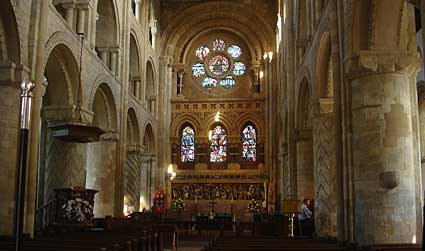
Inside the Abbey Church of Waltham Holy Cross
A settlement existed in Waltham in Saxon times, but the earliest recorded history of the town dates back to the reign of King Canute (also known as Cnut, which is a bit unfortunate!).
Here's how the legend goes: during the reign of King Canute (1017 to 1035) some bloke man nodded off and dreamt that on a hilltop at Montacute (15 miles south of Glastonbury) some fab treasure would be found
Excavations were made there and - would you believe it? - a whopping great flint cross was dug up.
It was decided that the cross would look just dandy in Glastonbury Abbey, and it was placed on a cart drawn by twelve red and twelve white oxen by the nattily-named, Tovi the Proud. But the recalcitrant buggers were having none of it, refusing to go in the right direction.
Instead, they made their own way across country until they came to Waltham, where they stopped by the church where it became the shrine of the cross, known as the Holy Rood.
In 1060, King Harold consecrated a large new church in its honour, and it wasn't long before miraculous cures and visions were going on al around the place
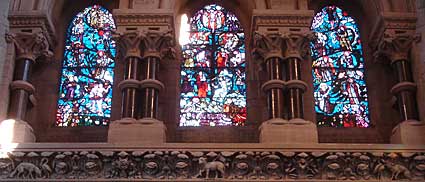
Stained glass above the altar at the Abbey Church of Waltham Holy Cross
Waltham soon became the numero uno destination for discerning pilgrims and soon grew rich enough for the church to be on a grand scale, less than sixty years of being consecrated.
The new church kicked ass. It was over twice as long as the present building, which is merely the original nave. A college of secular canons had been founded to serve in the church and by the end of the twelfth century it was occupied by Augustinian canons, and Waltham had become an abbey.
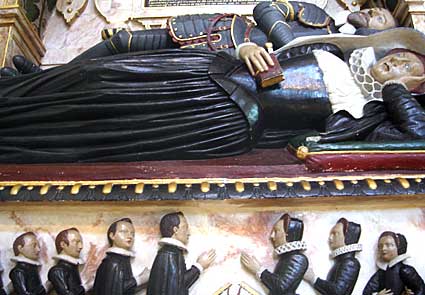
Painted monument to Sir Edward Denny (d.1599) and his wife Margaret, lords of the manor of Waltham.
The Abbey at Waltham was the last in the country to be dissolved by Henry VIII in 1540.
Most of the building was pulled down in 1540, with only the nave surviving to serve as the parish church. The original tower to its east collapsed in 1552, and a new one, in checkered stone, was built at the west end to prevent the imminent collapse of the building.

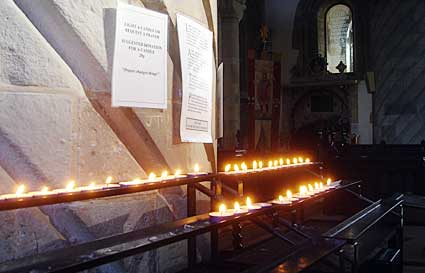
Candles, Abbey Church of Waltham Holy Cross.
The inside of the abbey features beautifully restored Norman architecture. The chunky pillars are decorated with zigzags and spirals with an a gallery and clerestory above.
The fine state of the abbey interior is largely due to the Victorian architect and designer, William Burges, who oversaw restorations during the 1860-70's.
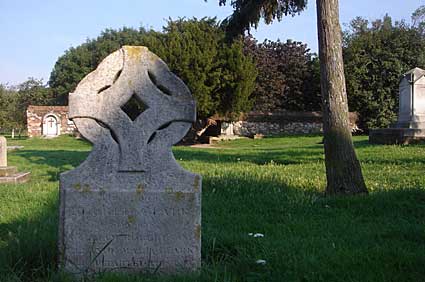
Celtic cross, graveyard, Waltham Abbey
After he got one in the eye at the Battle of Hastings, Harold's body was taken to Waltham Abbey and buried close to this celtic cross.
Marked by two dull-looking bits of stone (understated is the word), the inscription on one reads: "This stone marks the position of the high alter behind which king Harold is said to have been buried 1066" and on the other "HAROLD KING OF ENGLAND OBVT 1066"

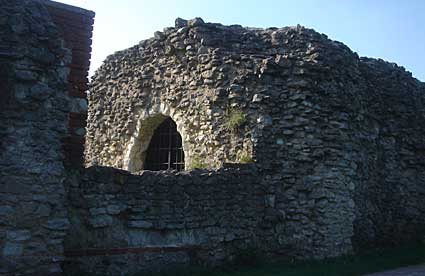
Abbey ruins.
Around the Abbey church are the ruined walls of the rest of the Abbey, the remains of a 14th Century bridge, and a ruined gatetower.
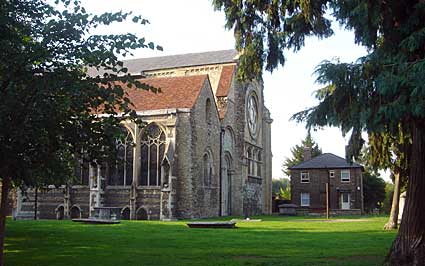
Waltham Abbey Church.
The nave from the 12th century rebuilding of the Abbey survived the dissolution and continued as the parish nave, now part of Waltham Abbey Church.
The west tower was built in 1556 using materials from the demolished Abbey.
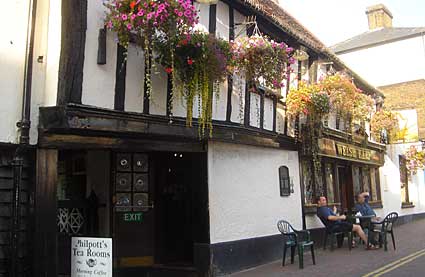
Welsh Harp public house, Waltham Abbey.
In in the town's old market square, this delightful 'olde worlde' one-room pub is reputed to be hundreds of years old.
Some history about the town: gunpowder mills were founded in Waltham Abbey in the early 1600s, with their explosive cargo being transported down river by boat to magazines at Woolwich and Purfleet.
The mills soon became the town's major employer, and was purchased by the state shortly before the Napoleonic wars.
The site adapted to changing technologies, switching to explosives manufacture by World War I.
Both the gunpowder used by Guy Fawkes and the explosives used in the Dam Busters raids are reputed to have been manufactured at Waltham Abbey.
Manufacturing ceased at the site in 1943. The site was used for explosives testing, until complete closure in 1991. It now hosts the Royal Gunpowder Mills Museum

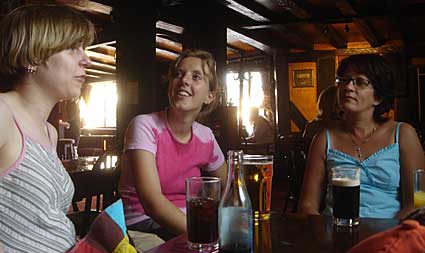
Inside the Welsh Harp public house, Waltham Abbey.
The thirsty u75 Walk Club imbibe much needed alcohol before continuing their leisurely stroll.
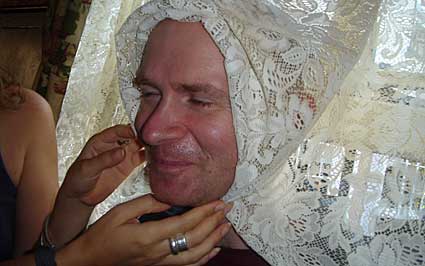
Hollis acquires some unusual headgear
The lace curtains in the pub make for a good photo opportunity!
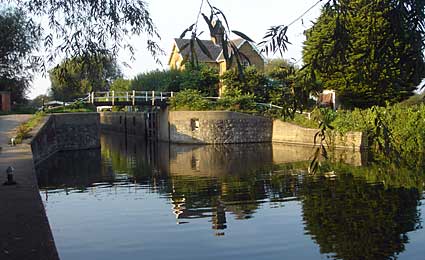
Walking to Cheshunt.
A late afternoon view of a lock and lock keeper's cottage
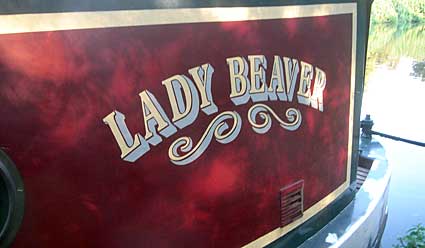
Barge detail.
Well, it amused some of us!
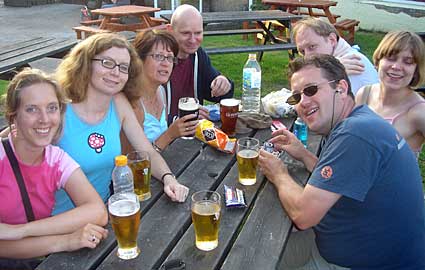
Drinking in the Malsters beer garden, Cheshunt
This pub has the dubious honour of being one of the least stocked boozers I've ever been in - almost all their beers were off, and the 'garden' wasn't much to write home about either.
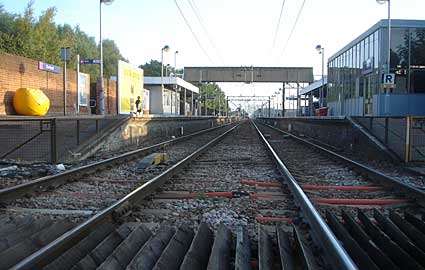
Cheshunt railway station.
A view of the station from the level crossing - the walk is now officially over!
|

